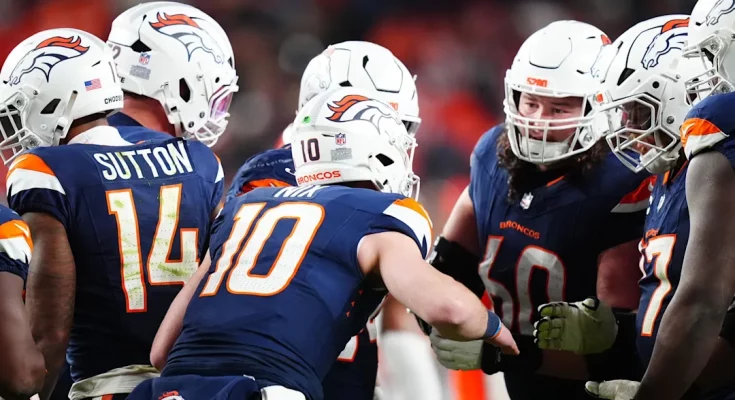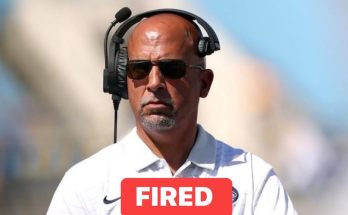The Denver Broncos entered the 2025 NFL season with a mixture of hope and skepticism surrounding their offense. While the team has made several moves in the offseason to bolster its offensive weapons, the new position rankings released by leading analysts and sports media outlets paint a picture that the Broncos’ offense still has significant work ahead. These rankings serve as a critical barometer for where Denver stands relative to other NFL teams in various offensive categories such as quarterback, offensive line, wide receiver, running back, and tight end. Analyzing these rankings reveals that despite some promising talent and potential, the Broncos’ offense remains a work in progress with plenty to prove before it can be considered a true threat in the highly competitive AFC West and beyond.
Starting with the quarterback position, the Broncos have their franchise signal-caller under center, but the position ranking data reveals that Denver’s QB is often placed in the middle to lower tier compared to his peers around the league. The quarterback is the heart of any NFL offense, and a middling rank in this crucial spot reflects several ongoing challenges. These include inconsistencies in decision-making, accuracy, and an ability to consistently elevate the play of the offense. While there have been flashes of brilliance and occasional deep-ball success, the Broncos’ quarterback is often criticized for lacking that elite, game-changing quality that distinguishes the very best. This relative underwhelming position ranking suggests the Broncos will need to continue developing or upgrading at quarterback if they want to contend for division titles or playoff success.
The offensive line ranks similarly on the spectrum of concern. Offensive line play is foundational to both passing and running games, and the Broncos’ line has often been described as a unit with potential but prone to lapses. According to the recent rankings, the Broncos’ offensive line falls into the lower half of NFL units. This ranking underscores ongoing issues with pass protection and run blocking, which directly impacts the offense’s overall efficiency. When a quarterback is under duress because the line struggles to hold the pocket, it leads to rushed throws and fewer opportunities for receivers to get open. On the ground, if running lanes are inconsistent or narrow, the running backs are forced into challenging situations, limiting the effectiveness of the rushing attack. The subpar offensive line ranking suggests that Denver’s front five must improve their cohesion and technique to give their offense a better chance to succeed.
Speaking of the running game, the Broncos have invested in talented backs, but the position rankings indicate the team is not yet among the league’s elite rushing attacks. The running backs are often ranked as average or slightly above average, reflecting that while the players themselves have skill, the overall effectiveness of the run game is limited by factors such as offensive line play and scheme fit. The rushing attack is important not only for gaining yards but for controlling the game tempo and keeping defenses honest. Without a dominant or at least a reliable running game, offenses tend to become one-dimensional and easier for opponents to defend. The middling ranking of Denver’s running backs, paired with the offensive line’s struggles, suggests that the Broncos still need to figure out how to create a consistent and threatening ground game to complement their passing attack.
Wide receiver play is another critical facet where the Broncos face questions. The wide receiver corps is generally viewed as a strength or at least a position group with high potential. However, the position rankings have shown that while some Broncos receivers rank in the middle tier or above, the overall group lacks the consistent top-tier superstar presence that could force defenses to game plan differently. In the NFL, having at least one elite receiver who can create separation and make contested catches is a huge advantage. This forces defenses to allocate extra resources and can open up opportunities for other players. The absence of such a definitive WR1 impacts the offensive ceiling. Some of the receivers on Denver’s roster have flashed playmaking ability but have not yet consistently demonstrated the type of elite production or reliability that would lift the unit’s ranking substantially. This creates a challenge for the Broncos to either develop current receivers or find impactful additions to the group in order to improve their offensive potency.
The tight end position is another area where the Broncos are under the microscope based on the rankings. Tight ends today are expected not only to block effectively but also to serve as versatile receiving threats. The rankings indicate that Denver’s tight ends are ranked in the lower to middle tier of NFL units, which signals concerns about both blocking and receiving production. Tight ends often serve as safety valves in passing offenses, providing short- to intermediate-route options for quarterbacks under pressure. They are also key blockers on running plays. If the tight ends are not contributing significantly in either dimension, it places additional pressure on the other offensive players to carry the load. The rankings suggest that Denver’s tight end group needs to elevate its game both in the passing and running schemes for the offense to truly reach a higher tier.
Looking at these position rankings collectively, a clear picture emerges: the Broncos’ offense is a patchwork of average to above-average talent with a few bright spots, but it lacks the elite foundational pieces necessary to compete consistently at the highest level. The middle-to-lower tier rankings in critical positions like quarterback, offensive line, and tight end reveal weaknesses that can limit offensive production, especially against top defenses in the league.
Another dimension to consider is the coaching and scheme fit. Even the most talented groups require a coaching staff that can optimize their strengths and mask their weaknesses. The Broncos’ offensive coordinator and head coach are tasked with developing a game plan that plays to the personnel’s strengths. However, the rankings suggest that there may be a disconnect between potential talent and on-field execution. Inefficiencies in playcalling, failure to adapt during games, and struggles to maximize personnel matchups have been recurring themes in Denver’s offensive struggles. Until the coaching staff can design and execute a system that better leverages their offensive assets, the position rankings and on-field production may remain underwhelming.
The new rankings also shed light on the importance of player development and roster management. The NFL is a league where constant evolution and improvement are required to stay competitive. Many of Denver’s offensive players are young or still developing, which means there is room for growth. However, development takes time, and the Broncos are competing in a division that features explosive offenses with well-established stars. This means Denver cannot rely solely on potential—they must accelerate the progress of their offensive players. Furthermore, roster decisions in the draft, free agency, and trades will be critical to address the deficiencies highlighted by these rankings. Identifying and acquiring impact players in key offensive positions should be a priority.
Injuries and consistency also factor heavily into how the Broncos’ offense will perform. The rankings reflect player performance when healthy, but injuries can derail even the best-laid plans. The Broncos have had injury issues in the past, particularly along the offensive line and at skill positions. Sustaining health throughout the season is vital for continuity and rhythm, which are essential for offensive success. The position rankings act as a guide but cannot fully account for the unpredictable nature of injuries and how they might affect the offense’s cohesion.
In summary, the new position rankings offer a sobering yet realistic evaluation of the Broncos’ offensive outlook. Despite flashes of talent and potential, the rankings clearly show that the offense has several critical areas that need improvement. The quarterback, offensive line, running backs, wide receivers, and tight ends all fall short of elite status and collectively limit Denver’s offensive ceiling. Coaching and scheme fit remain areas for refinement to better leverage existing talent, and player development and roster upgrades are necessary to elevate the unit’s performance.
For Broncos fans and analysts, the takeaway is that while there is reason for cautious optimism, the offense is far from a finished product. The upcoming season will likely be a test of whether the Broncos can make meaningful progress in these key areas or if the offensive struggles will continue to hold the team back from championship contention. The Broncos’ offense still has much to prove, and the position rankings serve as a clear roadmap for where the team must focus its efforts to become a truly dominant force in the NFL.



